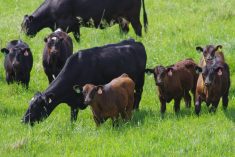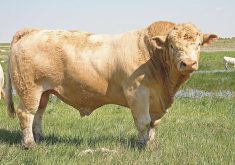Oklahoma wheat farmer Keith Kisling had two words for the late winter snowstorm that swept across the U. S. Plains:
“Perfect timing.”
After an extended run of an extremely dry winter, farmers throughout key winter wheat-growing U. S. states largely welcomed the several inches of snow, ice and rain that hit March 28 and 29.
Kisling said his crop in northern Oklahoma got 10 to 12 inches (25 to 30 cm) of snowcover, which protected the wheat from high winds even as it recharged dry soils.
“We were at a point where we were needing some moisture. It was pretty critical,” he said. “So the storm was perfect timing.”
Read Also

Grazing ‘sweet spot’ boosts pasture performance
Timing-focused approach to pasture management touted to boost forage growth, livestock gains while also cutting farmer labour and inputs
Up to 14 inches of snow were seen in Guymon, Oklahoma, and 12 inches were reported in Liberal, Kansas. Twenty-eight inches (71 cm) fell in Pratt, Kansas, while the Texas Panhandle saw 11 inches, according to Mike Palmerino of DTN Meteorlogix.
“It was definitely a heavy snow event,” said Palmerino.
Bill Spiegel, a spokesman for Kansas Wheat, which represents growers in the state, said there were some areas along northern Kansas, particularly in the central part of the top wheat-growing state, skipped over by the storm.
Still, he said, the moisture was welcomed where it fell.
“It definitely is of benefit to the wheat crop. Some areas of the state that were dry got much needed moisture,” said Spiegel.
In Texas, where the bulk of the new crop is rated in poor to very poor condition by state agriculture authorities, the moisture might not have come in time, said Texas A&M extension agronomist Brent Bean.
“In some cases … it was too little too late,” he said.
Many dryland wheat fields in the Texas Panhandle have deteriorated rapidly in the last few weeks as warm weather spurred plant growth that turned to plant stress and soil moisture was inadequate to fuel development.
Moisture there should help some of those fields. But the cold temperatures that accompanied the storm also could have caused some freeze damage, Bean said.
“We’re waiting to see,” said Bean.
The trio of Kansas, Oklahoma and Texas are the three largest states in terms of winter wheat seedings this season.
Kansas, which last year harvested an estimated 356 million bushels of winter wheat and is typically the top production state, has about nine million acres seeded this year.
Oklahoma has planted about 5.4 million acres and took in 166.5 million bushels last year, while Texas seeded acres total an estimated 5.9 million acres after farmers last year harvested 99 million bushels.














